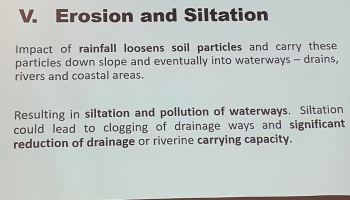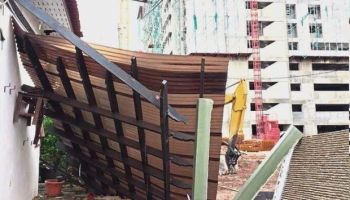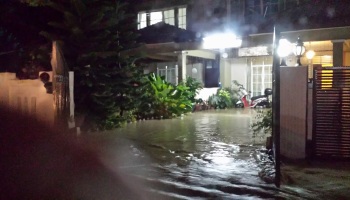In May this year, we voted for a change of government at both state and federal levels after 61 years of suffering under the yoke of Umno and its partners. We voted for hope and change.
The Pakatan Harapan (PH) parties went from being in the opposition to becoming the government of the day. When they were opposition politicians they could only voice their objections and concerns. But today they are in power to carry out what they hoped and fought for. Are they carrying out the trust that we placed in them?
Let us examine this in relation to the biggest project confronting the people of Penang (also one of the largest mega projects in Malaysia): the RM46 billion Penang Transport Master Plan (PTMP), and more immediately, phase 1 of this plan – the proposed Penang Island Link 1 (PIL 1) and the LRT project. The PIL 1 is an extension of the aborted Penang Outer Ring Road (PORR).
What did our present Chief Minister Chow Kon Yeow say when he was the opposition MP in 2002? “If the findings of the Halcrow Report are true, Dr Koh would be irresponsible in pushing the PORR through as this will not be a long-term solution to the traffic congestion on the island…”
There were two other minor reasons why Chow opposed the PORR: because it was a tolled road and no open tender was used to award the project. But these cannot be the main reasons for opposing it.
And what did Lim Kit Siang say on May 28, 2002?
“The nightmare of the Penang traffic congestion is likely to be back to square one, not in eight years but probably less than five years, after the completion of PORR.
“What Penang needs is an efficient public transport system based on sustainable transport policy, as PORR is not a medium-term let alone long-term solution to the traffic congestion nightmare on the island.”
Since these two DAP leaders could not be clearer on why they opposed construction of the PORR as it would not solve traffic problems, how does Chow now justify the PIL 1?
According to the environmental impact assessment (EIA) of the PIL 1, the consultants reported that by 2030 (between five and seven years after completion of PIL 1), traffic volume will reach up to 8,000 pcu/hour (passenger car unit) during evening peak hours.
Translated into layman’s terms, we would be back to square one in terms of traffic congestion. This was exactly what the transport report of 1998 by international consultant Halcrow said of PORR. Back then, Chow asked Koh Tsu Koon (then Penang’s chief minister) to disprove Halcrow’s findings. Today we ask Chow the same question.
Public policy must be based on scientific study, analysis and evidence, not on whims and fancies. (That is why the Penang state government funds the Penang Institute to provide sound policy analysis and advice.) If the EIA’s conclusion is that the PIL 1 will not solve traffic congestion in the medium and long term, then the chief minister must justify to the people of Penang on what other grounds he based his decision to spend RM8 billion on one highway that will not solve Penang’s traffic congestion and is fraught with safety risks, on top of financial, environmental, social and health costs. How should he explain his volte-face?
Lim Kit Siang made it clear that the only alternative is to have an efficient public transport system. This is a golden opportunity for these leaders to implement what they preached. The chief minister said at a town hall meeting on Sept 20 that the state is proposing a balanced approach to solving the transport problem: building roads and public transport.
Let us examine the actual facts.
1. Penang island presently has 2.8 times more highways on a per capita basis than Singapore (84m per 1,000 persons in Penang versus 30m per 1,000 persons in Singapore).
2. The state government under the PTMP is planning to build another 70km of highways, many of them elevated, marring the city landscape and thereby doubling our highway per capita to 4.5 times that of Singapore.
3. Presently Penang’s public modal share of transport is dismal at 5%, i.e., only 5% of people who travel use public transport, compared to 67% in Singapore.
From the above, it is clear that Penang’s transport situation today is totally tilted towards roads and against public transport. Hence a balanced approach must mean prioritising improvement of public transport and not the construction of more highways that encourage more private road use.
The primary objective of the PTMP is to raise public modal transport share to 40% by 2030. But spending RM15 billion on building highways in the first phase of the PTMP (RM8 billion on PIL 1 plus RM6.5 billion on the three paired roads and tunnel under the Zenith package) and RM8 billion on one LRT line is NOT a balanced approach.
In fact, under the Halcrow PTMP, an integrated public transport network consisting of trams, bus rapid transit, commuter rail and a new cross-channel ferry service was estimated to cost RM10 billion. But all these are shelved or relegated to future dates while priority is given to building highways. The chief minister must explain to the people of Penang why such an unbalanced approach is adopted. Is the policy based on scientific evidence or on other types of interests that we are unaware of?
The saying that “justice must not only be done but must be seen to be done” aptly applies in this case. The people of Penang must have clear and credible answers to dispel any possible misgivings.
I respect and have worked with Chow for the last 10 years on the Penang transport issue.
I recall what he told Koh: that if the findings of the EIA report are true then Koh would be irresponsible in pushing the PORR.
Now, in the case of PIL 1, the arguments are even stronger that this will not be a long-term solution to the traffic congestion on the island.
Source: FMT by Lim Mah Hui
Lim Mah Hui is a former professor, international banker and Penang Island city councillor.
The views expressed are those of the author and do not necessarily reflect those of FMT.
Related posts:
















